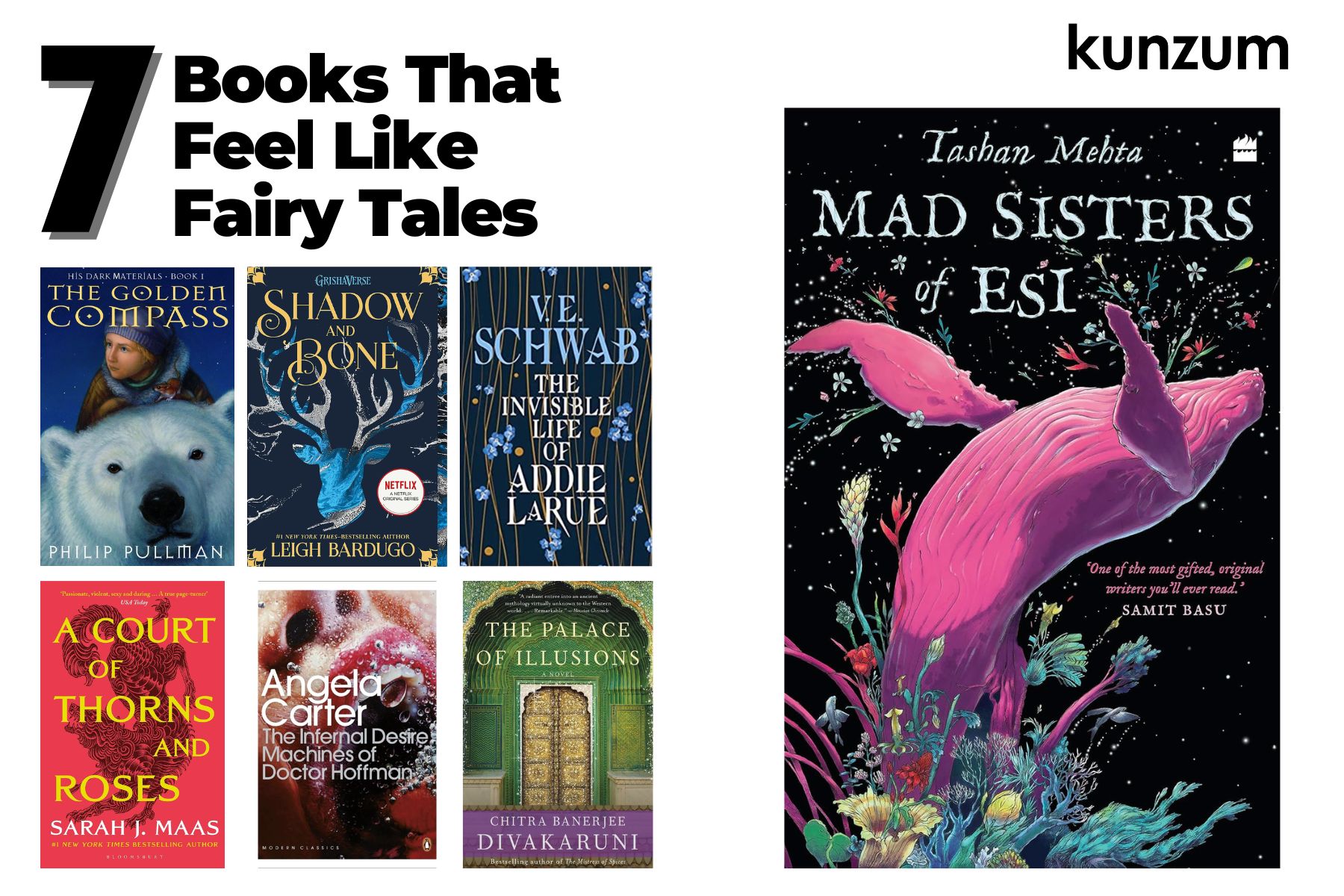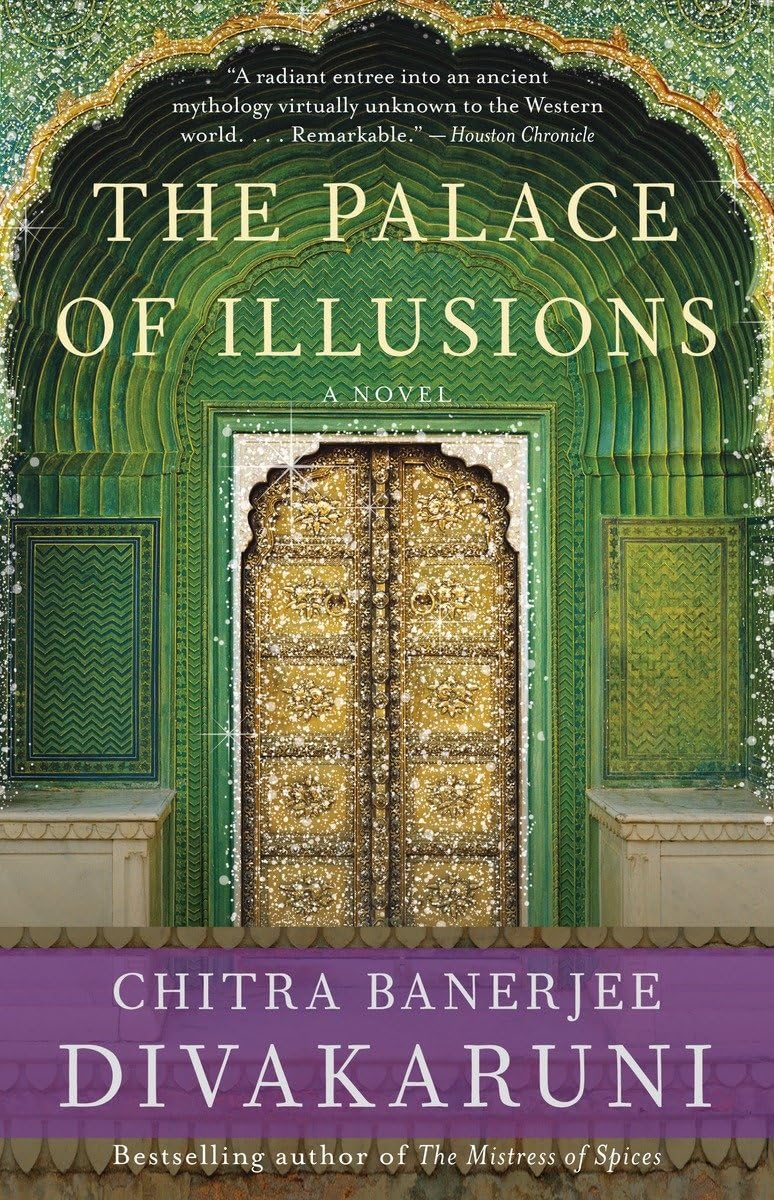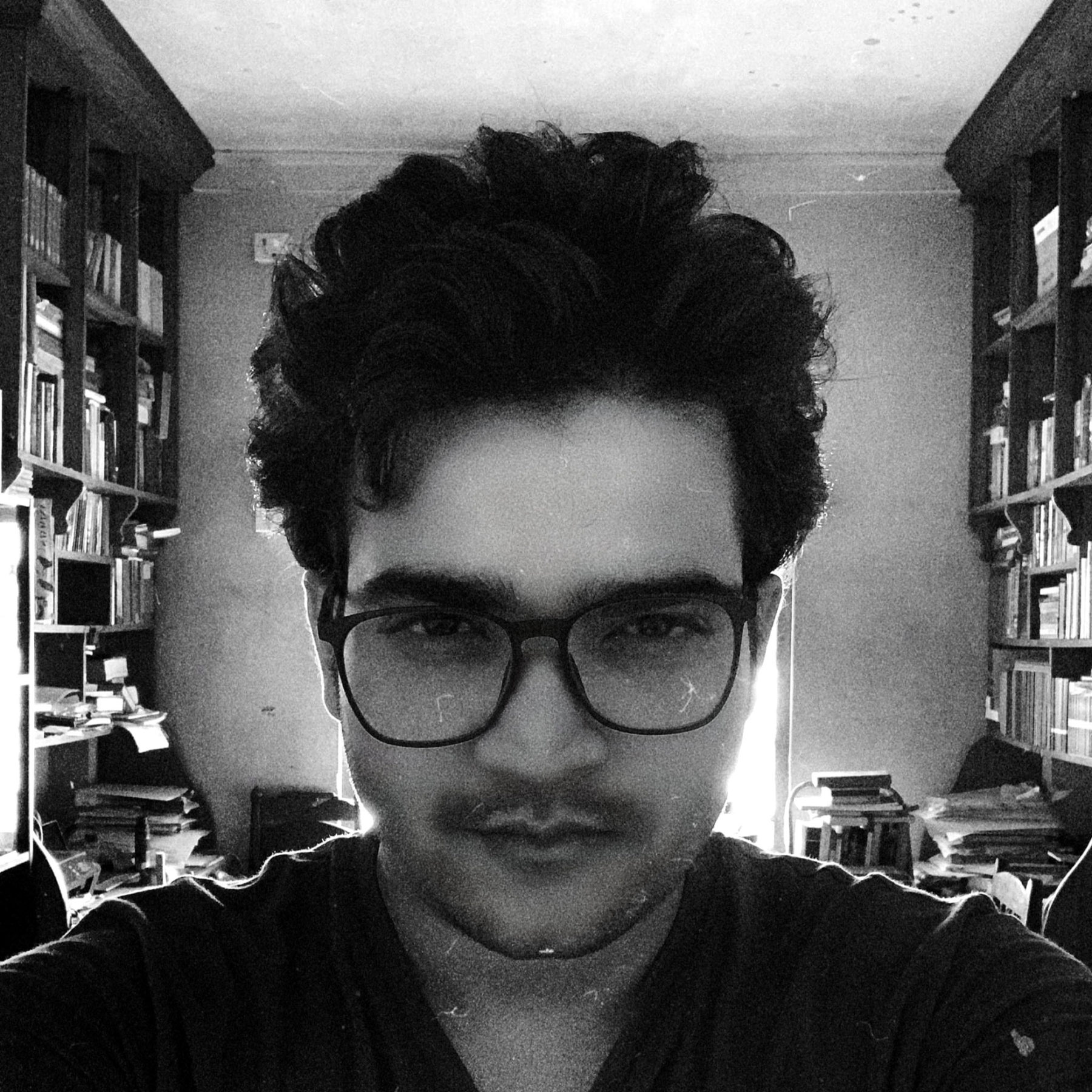
“Why do fairy tales fascinate us? Why do they stay by our side long after we hear them and become our little pieces of pleasure?”
— Tashan Mehta, Mad Sisters of Esi
For centuries, fairy tales have been our first forays into literature. As children, we grow up listening to these sometimes dark, often joyous fantasies; and even as adults, their sheer imaginative power continues to enthral us — serving as portals into mysterious, magical worlds. Fairy tales enable us to escape our everyday lives and dream of magical realities. In author Tashan Mehta’s words, “they (…) become our little pieces of pleasure.” Here are seven modern novels that feel like fairy tales and take us back to those early experiences of joy and wonder:

His Dark Materials trilogy by Philip Pullman
His Dark Materials is a trilogy of fantasy novels by British writer Philip Pullman. The novels follow the coming of age adventures of teenagers Lyra Belacqua and Will Parry as they travel through a series of parallel universes connected by dust — a cosmic particle that represents the collective forces of consciousness, knowledge, and wisdom. Although His Dark Materials is traditionally marketed as young adult fiction, Pullman wrote the novels with no target audience in mind. And while the delightful high fantasy elements include dæmons or physical manifestations of people’s spirit animals, flying witches, and armoured polar bears, the novels also delve into concepts from physics, philosophy, and theology to present cutting criticisms of organised religion, especially Christianity.

The Invisible Life of Addie LaRue by V.E. Schwab
V.E. Schwab’s spellbinding 2020 fantasy novel The Invisible Life of Addie LaRue revolves around the life of Adeline “Addie” LaRue — a young woman in 18th century France who makes a Faustian bargain with a god of the night that makes her immortal, but curses her to be forgotten by everyone she meets. The story takes place between present-day New York City, and flashbacks that start in early 1700s rural France and follows her life as she travels the world and witnesses major historical events, subtly influencing people and making her marks in history.

The Shadow and Bone trilogy by Leigh Bardugo
Leigh Bardugo’s young adult fantasy adventure series Shadow and Bone follows the adventures of Alina Starkov, a teenage orphan in the Kingdom of Ravka (inspired by early 19th century Russia) when, one day, she unexpectedly discovers that she has the magical power to summon and manipulate light, and her friend Malyen “Mal” Oretsev, an orphan she grew up with, who has an almost supernatural ability to track people. The novels unfold as Alina and Mal battle against the machinations of the Darkling, the leader of the Grisha, or people like Alina who have the ability to control and use the elements as weapons.

A Court of Thorns and Roses series by Sarah J. Maas
A Court of Thorns and Roses is a series of fantasy novels by Sarah J. Maas which traces the journey of Feyre Archeron after she is taken to the faerie lands of Prythian as punishment for killing a wolf in the woods. The series focuses on Feyre’s adventures across Prythian and the faerie courts, following an epic love story and a fierce war that breaks out between the faerie kingdoms after her arrival.

The Palace of Illusions by Chitra Banerjee Divakaruni
Indian-American poet and novelist Chitra Banerjee Divakaruni’s 2008 novel The Palace of Illusions is a retelling of the Mahabharata narrated by Panchaali, or a young Draupadi. The novel follows Panchaali’s life from her magical birth to her storied life as she navigates a patriarchal world through marriage, exile, and a savage internecine civil war. Chitra Banerjee Divakaruni uses the epic backdrop of the Mahabharata to write a timeless story about what it means to be a woman in a man’s world that wasn’t made for you.

Mad Sisters of Esi by Tashan Mehta
Tashan Mehta’s 2023 novel Mad Sister’s of Esi is part creation myth, part fairytale, part fable, and part speculative fiction about Myung and Laleh, sisters and keepers of the whale of babel within whose interconnected cosmic chambers exist a multitude of worlds: formed, unformed, and still-forming. Mehta is a master of world-building and she utilises all the tricks of the trade—leaping across time and place, from one point of view to another, from traditional narrative to epistolary chapters in the form of metaphors, fragments, journal entries, research papers, and archival records from the museum of collective memory, from first-person perspective to third, and present to flashback—to tell this deeply intimate story about love, sisterhood, and madness.

The Infernal Desire Machines of Doctor Hoffman by Angela Carter
Angela Carter’s 1972 novel The Infernal Desire Machines of Doctor Hoffman has been called a theoretical novel and a philosophical novel because of its exploration of feminist and critical theories, as well as surrealism, romanticism, magical realism, and other branches of continental philosophy, but at its fantastical core, it is a postmodern fairy tale about the power of mass media and counterculture. Narrated by Desiderio—the novel’s disillusioned former war hero protagonist—near the end of his life, the story follows his quest to save his city which, when he was a young government worker, came under attack by the sadistic scientist Doctor Hoffman’s reality-distorting desire machines.
Pick up a book with a fairy tale feel from any Kunzum store or WhatsApp +91.8800200280 to order. Buy the book(s) and the coffee’s on us.

